22 Sep Discover Romanesque Art in the Pyrenees: An Authentic Adventure
“Art is the expression of your relationship with the world. Art opens up the soul” — Pascale Montandon, artist. Quote from the book, Strappo: The Foreign Acquisition of Catalan Romanesque Art
Sightseeing for sightseeing’s sake has never been the way I travel. Meaningful and purposeful travel is more my style. A weeklong cooking course across the pond, hiking a pilgrimage route, ski lessons to move beyond the bunny trail, or a guided birding trip to a national park are rewarding, experiential, totally different, and fun.
Probably like you, I often make a museum visit a must-do while on any trip. I tend to check out the museum’s most famous art pieces, zip through the other collections, and then make a beeline for a local restaurant, winery, craft brewery, or artisan shop.
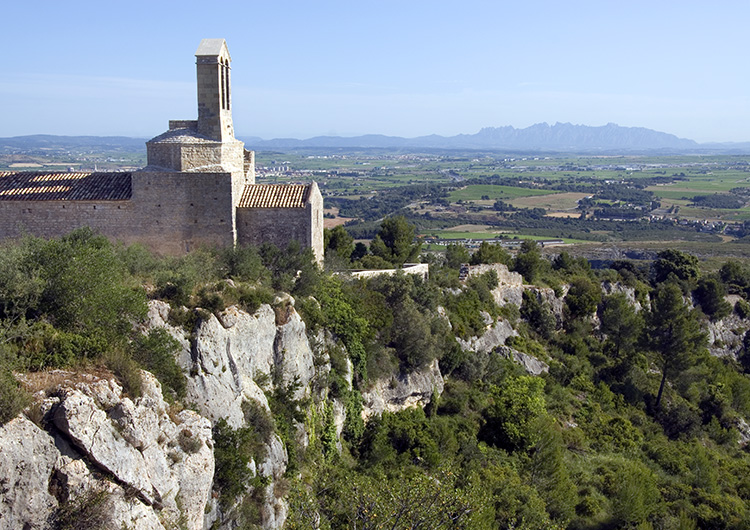
The Pyrenees in Catalonia, Spain. Photo: Catalan Tourism Board
Recently, choosing art and culture as a travel theme struck me. Why not build an active vacation around a unique cultural experience? When I ran across the idea of discovering Romanesque art in the Pyrenees, I was intrigued.
A trip focusing on the art and culture of Spain would be new and different. Although I wasn’t an art history major in college, I did love the Art History 101 course I took at New York University with H.W. Janson’s History of Art as my textbook (and which still lies on my bookshelf). Surely, I would be prepared for an art-based vacation. However, I was soon surprised by how an art trip could also be quite the adventure.
As you start your travel research, tourism boards are of course a good source for ideas. The welcoming invitation to all travelers on the Catalan Tourist Board’s website, for example, says it all:
Discover and experience the cultural treasures hidden in every nook and cranny of Catalonia. Come and discover the cultural heritage, traditions, gastronomy, wines, and by doing so fall in love with our culture.
This seemed to encompass all the travel qualities I look for. (I love exploring “nooks and crannies!”)
So, if you are interested in art, culture, religious history, and European history; love to seek out chef-owned restaurants in the country; sample artisan foods, wine, and craft beer; and being active by hiking, kayaking, or canoeing, then discovering Romanesque art in the Pyrenees might just be your next trip.
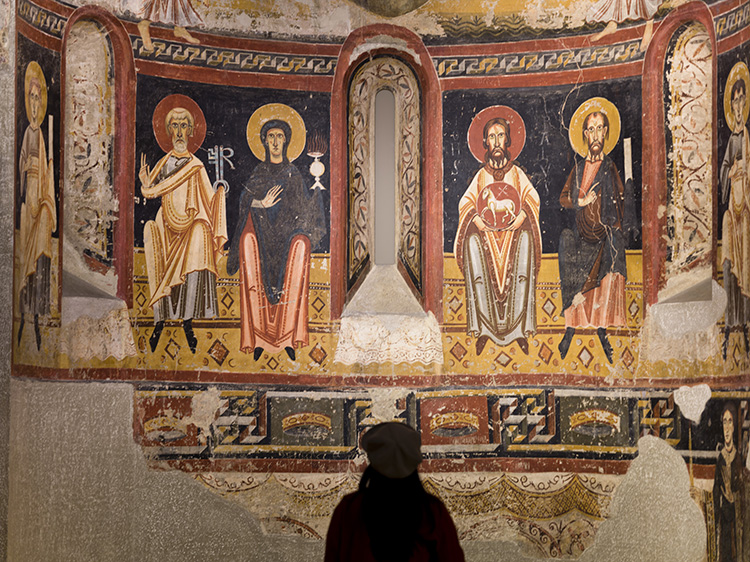
Romanesque art example. From the monastery of Sant Pere del Burgal (La Guingueta d’Àneu, Pallars Sobirà) on display at the Museum of National Art, Catalonia in Barcelona. Photo: MNAC
First, A Little Bit of History: What Is Romanesque Art?
Romanesque “in the manner of the Romans” art was created from around the second half of the 11th century through the 12th when the Gothic style became in vogue. The name “Romanesque” was actually designated much later in the early 19th century.
The Romanesque style is distinguished by curving barrel vaults, apses, and round-headed arches. The murals and the sculptures carried the biblical theme to keep the Christian followers in line.
Typical designs depicted scenes from the Old and New Testaments, featuring the birth, life, death, and resurrection of Christ; the apostles and saints; and, sometimes, scary dragons, demons, or other mythical beings.
Over the centuries, in many of these churches, the paintings disintegrated from dampness or were simply painted over as we segued into the next art period: Gothic.
Some were removed and taken elsewhere, making this trip a sort of “magical mystery tour.”
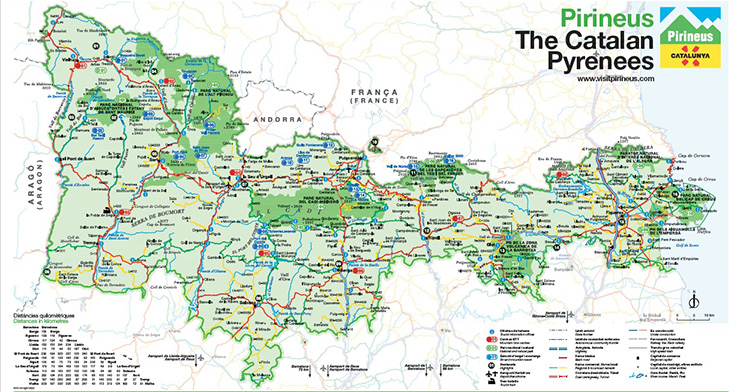
Map of the Pyrenees, Catalonia. Source: Catalan Tourism Board
Discovering Romanesque Art in the Pyrenees
My time traveling trip itinerary coincided with the year of cultural tourism in Catalonia and the 100th anniversary of an effort to preserve church Romanesque frescoes in the Pyrenees, many of which were moved to museums for safekeeping.
Removing these frescoes was no easy feat when you consider that these murals were hand-painted on stone in churches dotting the mountain areas. Catalonia is unique in its efforts to save the paintings by carefully removing them and putting them on display in museums such as in the National Art Museum of Catalonia in Barcelona.
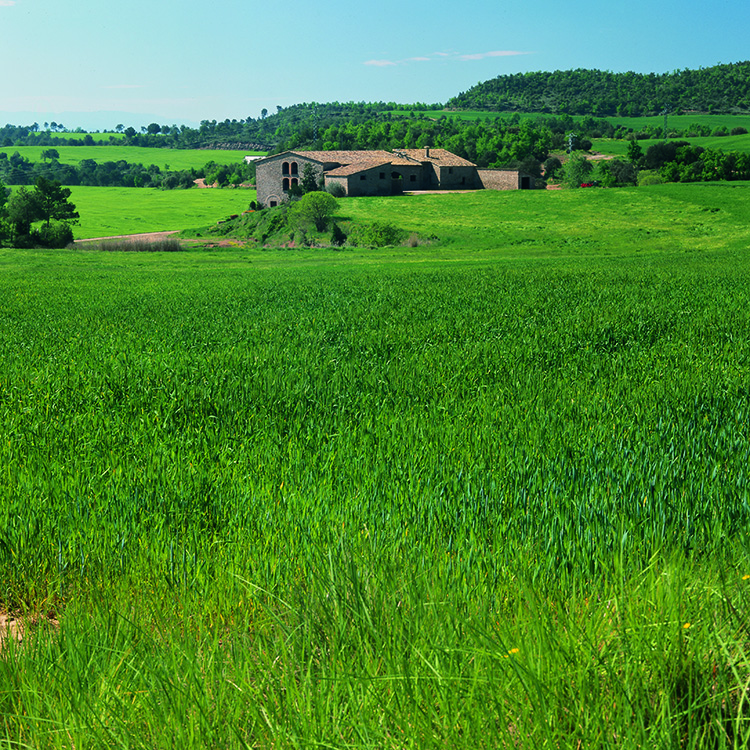
Catalonia is and was an area rich in farmlands. Photo: Catalan Tourism Board
To set the stage, imagine that the year is 1100. The Catalonia region, especially in the Pyrenees, was graced with rich farmland, a river, castles, and churches. At the time, this was considered a very special place that could only be reached through winding roads on foot, by horseback, or by horse-drawn wagons. The landscape is similar in many places today.
Churches often had several purposes other than serving as a place to worship. They also served as castles or fortresses, providing safety to the locals, and social gathering spots. Bell towers are typically part of the architecture and were used as sources of communication and protection.
Artists were commissioned to paint murals on the stone walls of the churches. Since people couldn’t read, pictures were used to tell religious stories. “The theory was to control everyone with the fear of god,” one tour guide told me.
These murals were the backdrop to religious activities seen primarily by those who lived in the area, that is, until the first decade of the 1900s.
This is where the mystery tour gets really interesting!
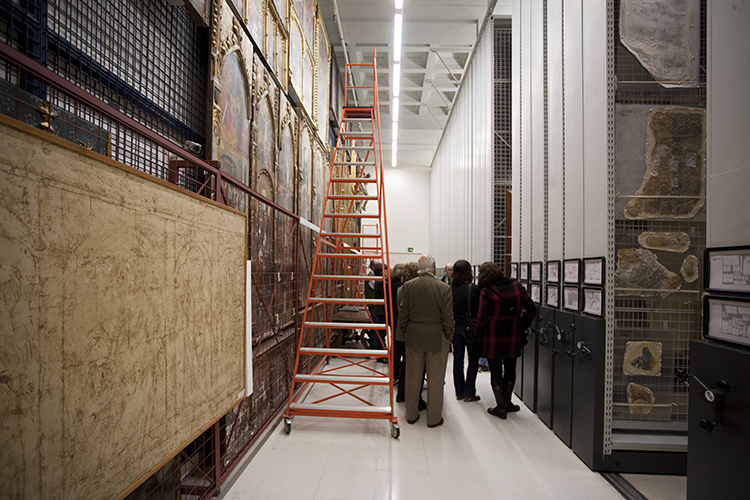
Archives storage of MNAC. Photo: MNAC
How Were the Murals Removed? Where Did They Go?
The account of how the murals were discovered, removed, and put on display elsewhere might fall in the category of “no good deed goes unpunished” or “now what have we done?”
Spoiler alert: all ends well.
In 1904 and again in 1906, the Hiking Club of Catalonia made its way to Vall de Boi to photograph and catalog the paintings. A year later, the Institute for Catalan Studies did the same. The Board of the Museums of Barcelona in good faith, took its cataloging a step further and printed reproductions of the frescoes for public use. This set off a gold rush to get ahold of the art by museums, art dealers, and collectors.

Original Romanesque murals on display at MNAC. Photo: MNAC
“The majority of these paintings come from rural chapels in the Pyrenees and other remote locations in Catalonia,” said Pepe Serra, director of the Museu Nacional d’Art de Catalunya (Catalonia National Museum of Art), in his introduction to the book Strappo: The Foreign Acquisition of Catalan Romanesque Art by Marti Gironell.
Serra said beginning in 1907, “various attempts came to light of antiquarians and collectors buying the paintings to then sell them in the United States.” This provoked the rapid and successful reaction of the Board of Museums to rescue and transfer the art to the museum in Barcelona.
Said Gironell, “To carry out this task, which could undoubtedly be described as an authentic adventure, they hired the same Italian specialist and restorers who had already participated in the recovery of certain paintings that were eventually exported and sold overseas. The removal of the artworks was managed with a technique that allowed for their extraction and conservation before their subsequent replacement: called strappo.
“… 100 years ago, anyone could take these murals for their home, their dining room. Italian techniques were used to remove the murals from the walls to be sold as paintings.”
In his book, Gironell describes the process of detaching mural paintings this way: First the painting is cleaned, then an agent is applied, detachment cloths are stuck to the mural, the cloths are subsequently removed, a calcium adhesive is prepared, rigid supports are prepared, the mural is removed and adhered to the canvas. And voila! (Or listo!)
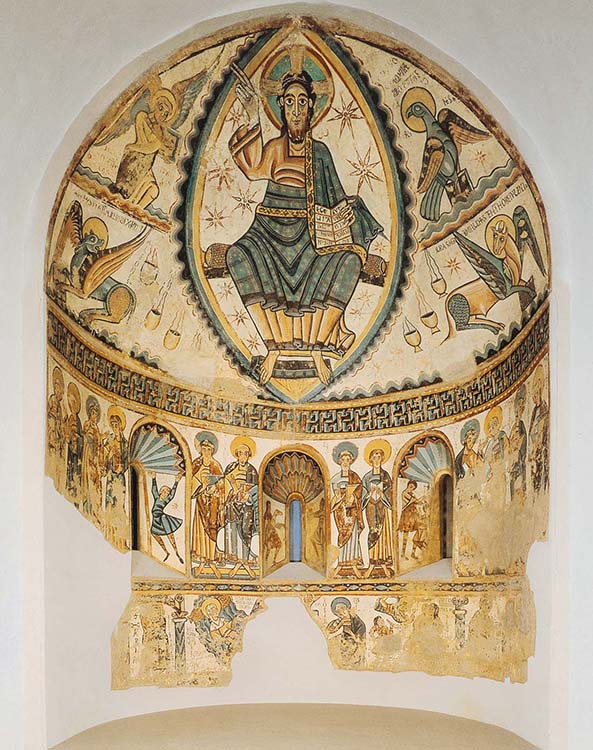
Christ in Majesty with Symbols of the Four Evangelists from Santa Maria de Mur on display at the Boston Museum of Fine Arts. Photo: © Museum of Fine Arts, Boston
Two examples of original murals now in the United States are the apse of the church of Santa Maria de Mur, in the Boston Museum of Fine Arts and Santa Maria d’Urgell Cathedral at the Metropolitan Museum of Art – Cloisters in New York.
Original murals on display at the National Museum of Art of Catalonia (MNAC) include ones from Sant Climent de Taull, Santa Maria, Taull; Sant Joan de Boi.
In addition, the Hearst Castle in San Simeon, California, has choir chairs from the Catalonia Cathedral in Seo de Urgel.
Some frescos were sold, some discarded.
Many of the original churches in the Pyrenees now have reproductions on display.
You will need to be the judge as to whether or not it was a good thing for these paintings to be removed and put on display in museums.
“It is clear that the rescue operation of all these paintings was itself a form of spoliation,” Serra said. “In the same way, it becomes ever clearer, in my opinion, that it was a success, and that it is precisely thanks to the physical removal of the works that we can enjoy them today in our own country, in a perfect state of preservation, within reach of everyone and with universal impact.
“Both approaches are correct and complimentary; nobody today doubts that the best site for a work of art is the place where it was produced, provided that the necessary conditions of conservation, security, accessibility and all those other factors required for sheltering it are met.
“For this reason, from the Museum’s perspective, the challenge we permanently and necessarily face is to make these paintings known to the whole world, but to do so at all times in direct and constant relationship with the places from which they proceed. This must be done with continuous reference to their original site and by working closely in tandem with those remote parts of Catalonia to help make visible a body of churches, enclosures and landscapes that are sites of world heritage.”
Romanesque Art Tour Itinerary Ideas
Getting there: Fly into Barcelona, the capital of the Catalonia region.
Insider tip: You might consider Norwegian Air, which bills itself as “the world’s best long haul, low-cost airline.” Norwegian Air offers flights to Barcelona from New York, Los Angeles, Fort Lauderdale, Orlando, and Oakland/San Francisco. I took off from Newark Airport. Although the flight was later at night than I’d usually take to Europe (11 p.m.), I immediately fell asleep and woke up feeling much less jet-lagged when I landed at noon the next day. The Dreamliner I took was spacious, comfortable, and on time.
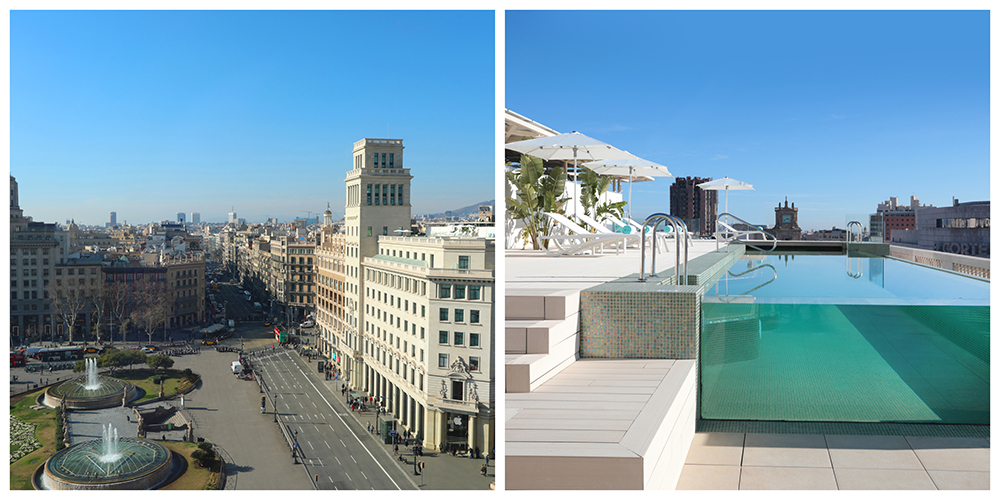
Iberostar Hotel on Paseo Gracia with its panoramic views, rooftop pool and bar. Photo: Iberostar Hotel
Check into the Iberostar Hotel on Paseo Gracia – right in the center of everything. Enjoy a drink on their rooftop and take in the panoramic view of the city.
Begin your tour at the Catalonia National Museum of Art in Barcelona. Rent a car or sign up with a tour operator to visit towns and places in the Pyrenees like Le Seu d’Urgell, Val d’Aran, Vall de Boi, Pallars Jussa county, Solsana Village, Vic and more …
Barcelona
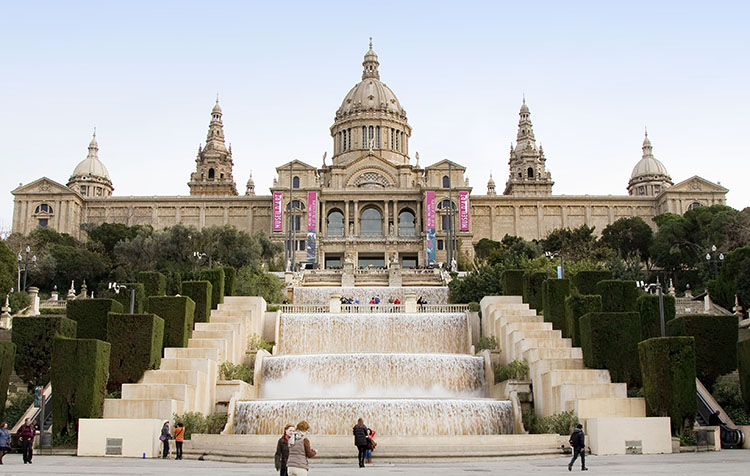
National Museum of Art of Catalonia
Museum of National Art de Catalunya (National Museum of Art)
Begin the Romanesque art trail by first visiting the National Art Museum of Catalonia (MNAC), truly a must-see. Originally built for the International Exhibition of 1929, a world’s fair, the museum is said to have one of the largest Romanesque collections of mural paintings in the world.
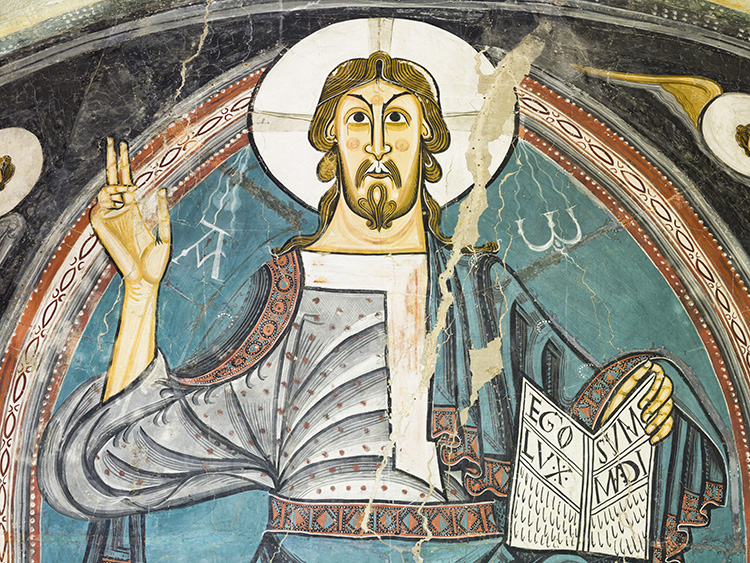
Sant Climent de Taull mural in Museum of National Art Catalonia. Photo courtesy of MNAC
Here you will see the actual mural lifted from the apse in the church of Sant Climent, and, later, you can visit Sant Climent to see the original church.
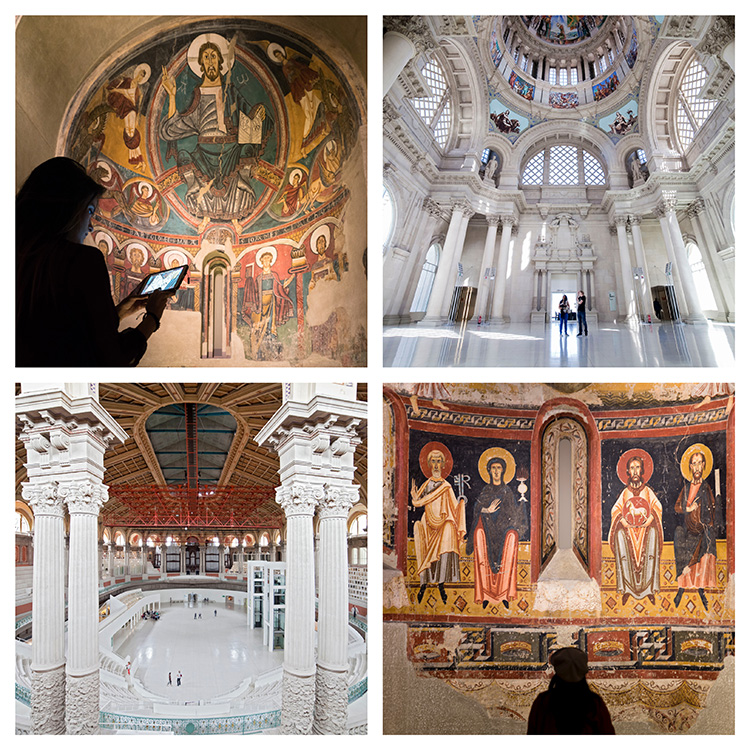
The MNAC is a “must see” in Barcelona. Photos courtesy of MNAC
The museum built a replica of the apse to showcase the original mural of an imposing Christ flanked by the symbols of alpha and omega (the beginning and the end). He is holding a book with Latin words meaning “I am the light of the world.” The paintings are almost Picasso-like in style.
After exploring the museum and Barcelona, head out on your Romanesque art trail to either of two valleys to explore the authentic churches: Val d’Aran (a four-and-a-half-hour drive to the northwest) and Vall de Boi (a 3-hour and forty-five-minute drive) from Barcelona. The valleys are an hour-and-a-half drive from each other.
On your way, stop at La Seu d’Urgell, around two-and-a-half hours northwest from Barcelona.

(Left to right) Santa Maria d’Urgell Cathedral exterior and interior. Photo credits, exterior: C.Worthington; interior: La Seui d’Urgell Tourism
La Seu d’Urgell
Almost a mile-and-a-half high up in the Pyrenees and the province of Lleida, Le Seu d’Urgell lies at the junction of two rivers—Segre and Valira—and is considered a gateway to Andorra.
Spain’s Vuelta a Espana and France’s Tour de France, two major professional cycling races, have passed through Le Seu d’Urgell several times, highlighting the area’s attraction to both road and mountain biking cyclists.
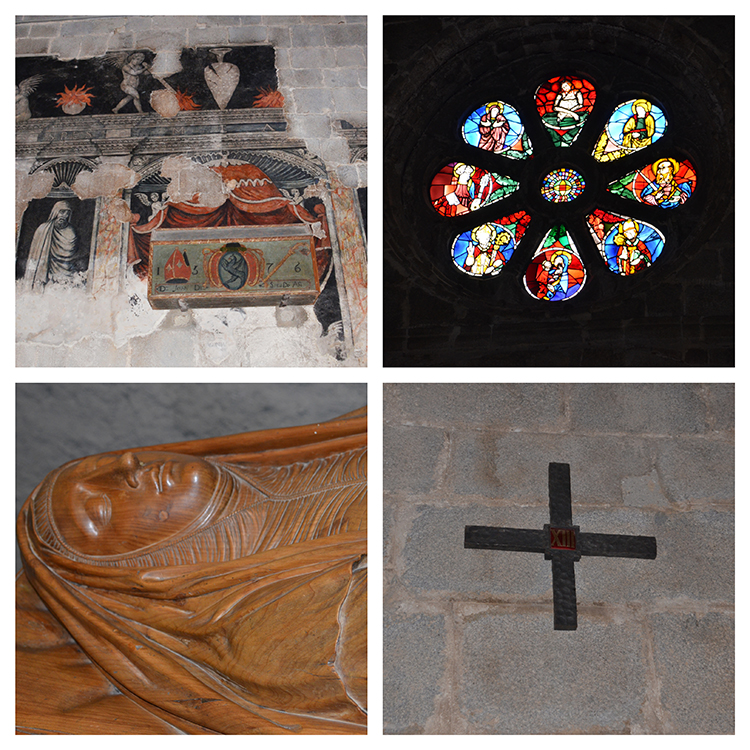
Details to be seen inside La Seu d’Urgell Cathedral. Photo: C. Worthington
Stop at the Santa Maria d’Urgell Cathedral to see the 11th-century apse, one of the oldest in Catalonia. With its three naves (the central part of the church) and five apses (the semicircular recess often with the alter), the cathedral stands as a jewel of the Romanesque art period.
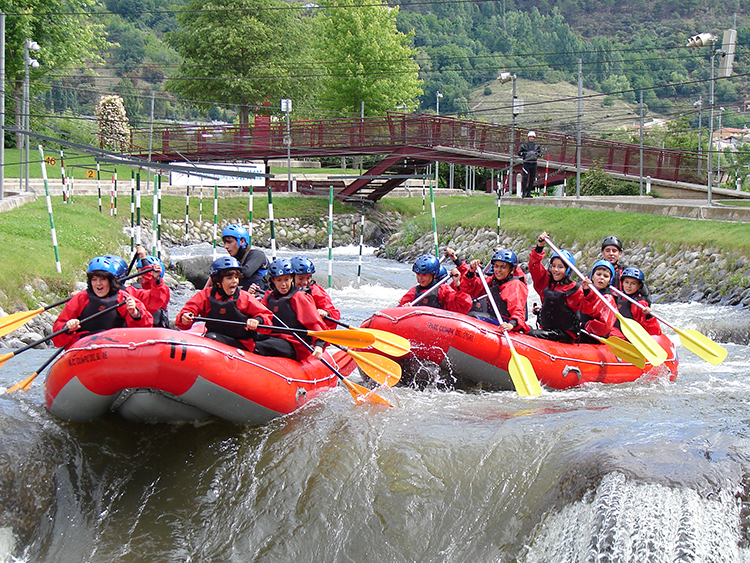
Try rafting on the artificial whitewater canoe course at the Parc Olimpic del Segre. Photo:
Challenge yourself at the Parc Olimpic del Segre where there is an artificial whitewater canoe course specially built for the 1992 Barcelona Summer Olympics and is now open to the public. The canoe slalom events were held here for both the Olympics and the world championships in 1999 and 2009.
Take a walk through the winding streets of the town and be sure to sample some of the local artisan cheese sold there.

Scenes from Sant Serni Church. Photo: CWorthington
Sant Serni Church
Another stop before Val d’Aran is to Sant Serni Church, located in Andorra, to see the Romanesque style. Winding, narrow roads lead to the small 12th century San Serni church with its view of the valley. Located high up on a hillside, this is where you will see some of the only original murals of the Pyrenees.

Val d’Aran. Photo: visitvaldaran.com
Val D’Aran (Valley of Aran)
Val d’Aran, also known as the “valley of valleys” for its spectacular scenery, borders France and is on the northern side of the Pyrenees. Discover any of the 33 villages, each with its own church, such as Santa Maria de Tredos, Sant Andreu de Salardu, and Santa Eulalia d’Unha.
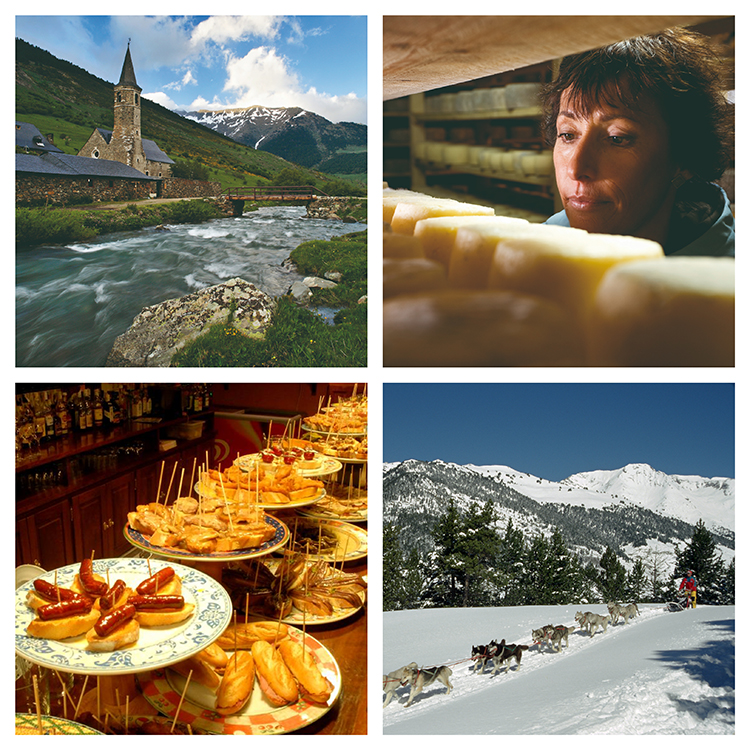
Discover the beautiful landscape, local cuisine and sports in Val d’Aran. Photo: visitvaldaran.com
In between visits to these churches, there are plenty of opportunities for discovering local cuisine, hiking, cycling, and shopping.
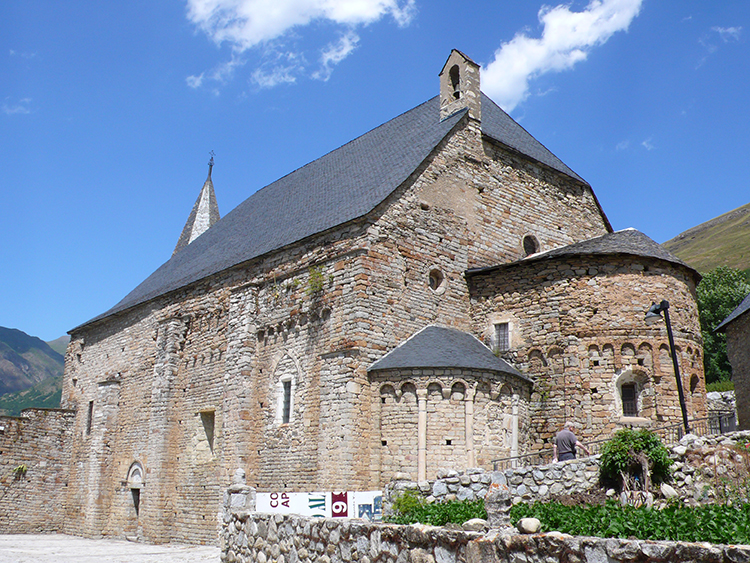
Santa Maria de Tredos. Photo: Wikicommons
Santa Maria de Tredos
The Santa Maria de Tredos church is a classic example of the Romanesque period with its three-nave layout, a barrel vault, and three apses.
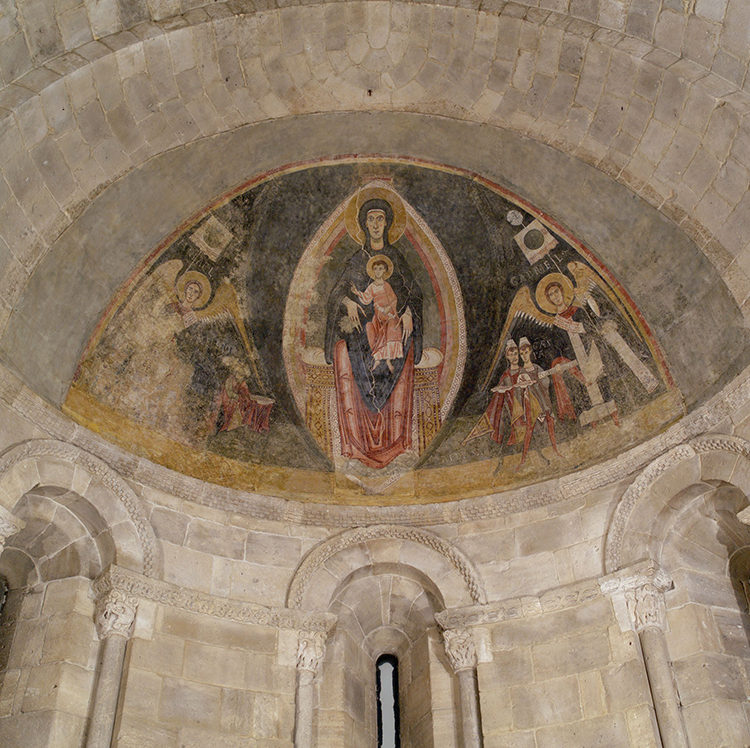
Mural on display at the Metropolitan Museum of Art – Cloisters. Photo: Met Cloisters
The murals were painted by “the master of Pedret,” the name given to the artist whose work is seen in several churches. These murals were removed and now appear for the public to see at the Metropolitan Museum of Art – Cloisters, high above the Hudson River in New York City.
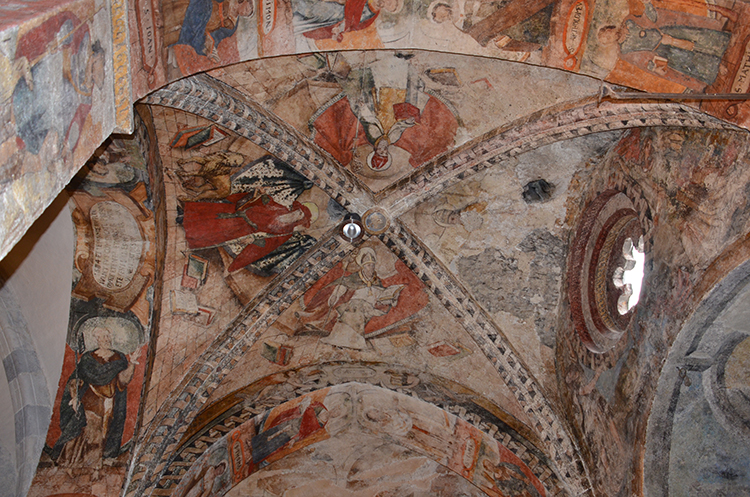
Apse of Sant Andrèu de Salardú in the village of Salardu. Photo: C. Worthington
Sant Andreu de Salardu
Another example of the Romanesque style, Sant Andreu de Salardu was built with the typical basilica with three apses. The wall paintings here are considered some of the best kept of the Aran Valley.

“Crist d’Unha.” Photo: visitvaldaran.com
Santa Eulalia d’Unha
Santa Eulalia d’Unha, located at the western end of the valley, is another example of the Romanesque style. There you can see Romanesque paintings, along with some from the 16th century. An imposing bell tower was added in the 18th century.
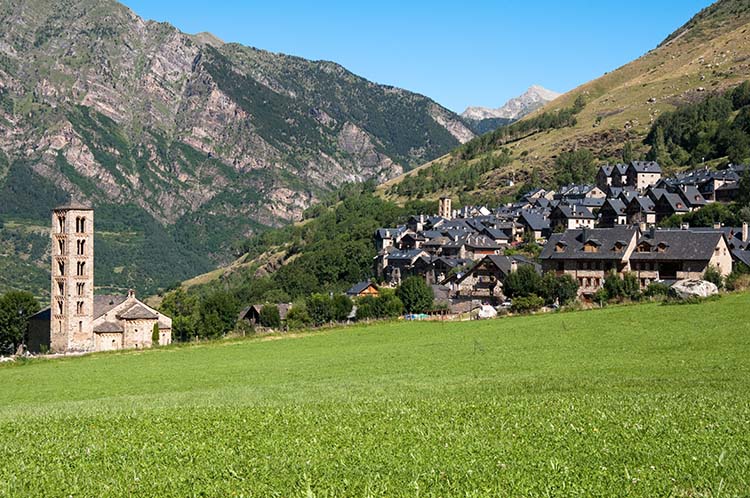
Town of Taull, Vall de Boi, Catalonia, Spain. Photo: Deposit Photos
Vall de Boi
Vall de Boi, a little over three-and-a-half-hour drive from Barcelona in the Catalan Pyrenees and district of Alta Ribagorca, is noted as a magnificent, steep-sided valley in the province of Lleida and best known for its nine Romanesque churches—the highest concentration in Europe—as well as the ski resort Boi-Taull.

Apse of church in Val de Boi. Photo: C.Worthington
Churches to Visit in Vall de Boi
Vall de Boi Romanesque heritage is made up of the churches of San Climent and Santa Maria in Taull, Sant Joan in Boi, Santa Eulalia in Erill la Vall, Sant Feliu in Barruera, la Nativitat in Durro, Santa Maria in Cardet, l’Assumpcio in Coll, and Sant Quirc Hermitage in Durro.
In the 11th century, six or seven priests were servicing the churches. Today, there is only one for all the remaining churches.
Here where “the Pyrenees seem to touch the sky,” you can see many of these churches in one area. Each one shares a similar architectural style to the other churches, all following a basic model that came from northern Italy.
Murals from the churches Sant Climent, Santa Maria in Taull, and Sant Joan in Boi are all on display at the National Museum of Catalan Art in Barcelona. An excellent source of information on the area is the Vall de Boi tourism website and the Romanesque Center of the Boí Valley.
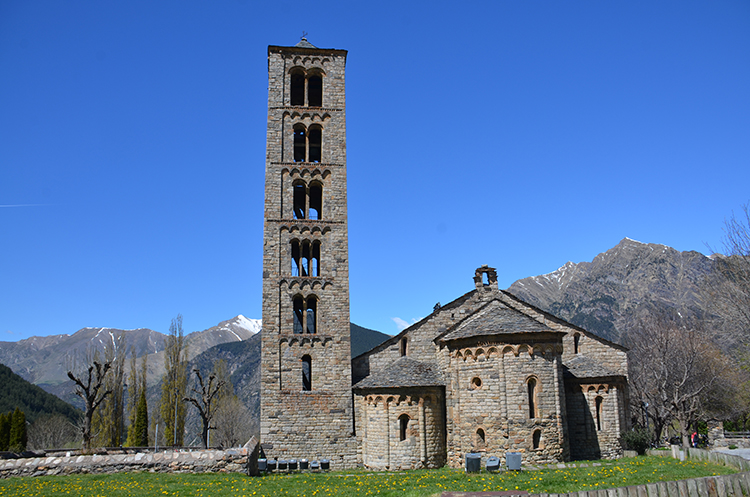
Sant Climent de Taull. Photo: C.Worthington
Light Show Not To Be Missed at Sant Climent
Sant Climent is considered one of the foremost examples of Romanesque art in all of Europe. In 2000, some-900 years after it was built, it was declared a world heritage site by UNESCO (United Nations Educational, Scientific and Cultural Organization).
For a total sensory experience that pulls you back to the 12th century and then to the 21st, I highly recommend seeing the 10-minute “video mapping” show at Sant Climent.
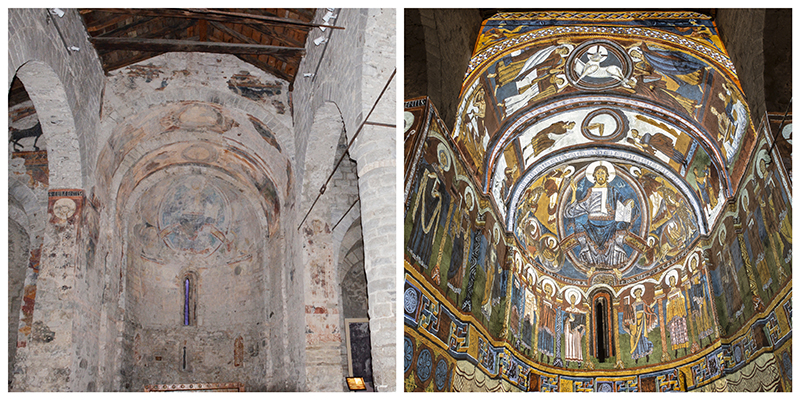
(Left) Sant Climent de Taüll church apse, built around 1123. (Left) Apse where fresco was removed. Photo: C.Worthington. (Right) Video mapping or “light show” reinstating the original fresco. Performance is set to music. Photo: Copyright Playmodes. Centre del Romànic de la Vall de Boí
Seated in a church pew and facing the apse completely devoid of murals or any painting, the experience starts with lights dimmed and an atmosphere of silence.
Slowly, the music builds and through video projection on the original walls, you will see the paintings come to life as if the artist is there working on the mural. Six high-definition projectors are used to achieve this re-creation. As the music builds, the paintings become more complete, with all the details and figures in all of their splendor appearing at the crescendo. The superior quality of the images and colors make this a very special display.
These are the same paintings that you saw at the museum back in Barcelona, but now, you are here and “living” the experience. Truly fantastic!
More To Do in Vall de Boi
While you are discovering the Romanesque art, you can also hike, cycle, and ski in the winter.
If you are a skier, you might want to put Boi-Taull on your list. Noted for its spectacular scenery, uncrowded runs, and high-quality snow, the ski area at 9,000-feet elevation boasts over 40 ski runs, including five green, four blue, 20 red, and 14 black. Welcoming all skier levels are 125 ski instructors, two ski schools, and a snow park for kids and grandkids.
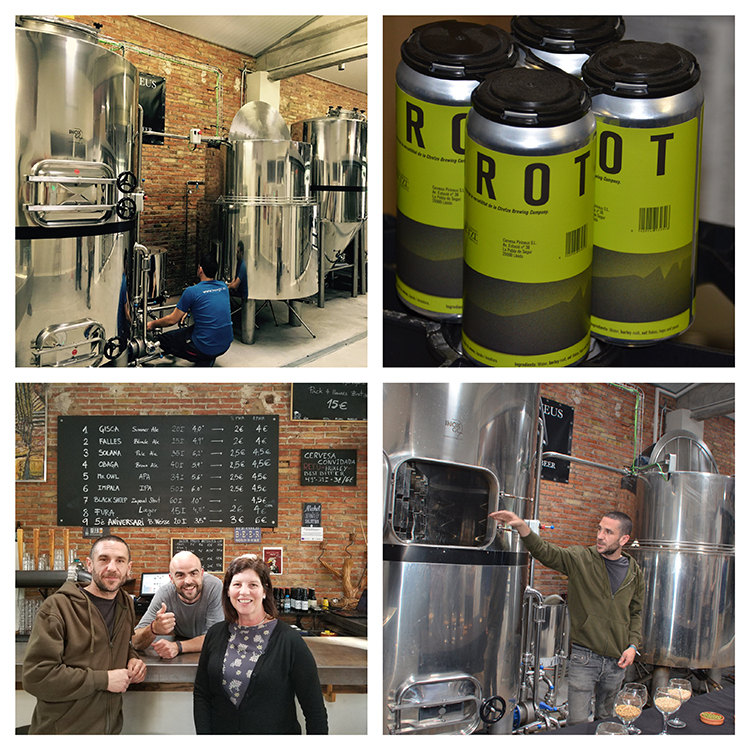
C-Tretze Craft Beer Factory. (Clockwise from top left) Touring inside the brewery; one of the beer styles brewed at C-Tretze; Joel Bastida, one of the founders describes the process of making the craft beer; Joel Bastida, his associate and publisher, Carolyn Worthington. Photos: C. Worthington
Time for a Break: Beer Tasting at Craft Brewery
C-Tretze Craft Beer Factory
Craft brewing knows no borders. The craft beer craze has swept Spain, just as it has in the United States. But beer is nothing new here.
Beer has been brewed in Spain for thousands of years. Fast forward to the late 1800s and early 1900s, and there were only a handful of breweries. Craft beer has only really taken off in the last few years, especially in Catalonia.
One such brewery is C-Tretze Craft Beer Factory started by young entrepreneurs Joel Bastida and Abel Sanchez. Located in the Pallars Jussa county, the brewery produces nine or 10 beers, producing about 60,000 liters—almost 16,000 gallons—a year. Interestingly, the hops they use come from Yakima, Washington, in the United States. Mostly beer is sold locally. This five-year-old brewery produces special editions for Christmas and a brown ale. This is a very fun place to stop, have a tour, and sample their beers. Check out the C-Tretze Craft Beer Factory website for directions and hours.

View from Aplec Castle Photo: CWorthington
Aplec Castell d’en Mur
The municipality of Castell Mur is most noted for Mur Castle , an imposing 1,000-year-old medieval castle, and the Santa Maria de Mur church.

Santa Maria de Mur church with replica mural. Photo: CWorthington
The church’s mural was sold by the priest of the church in 1919 and moved to Boston. The proceeds of the sale were used to build a new roof but the transaction prompted the Spanish government to become more involved in preserving art in its own country. Some mural remnants are in the Museum of National Art de Catalunya and a small piece remains there.
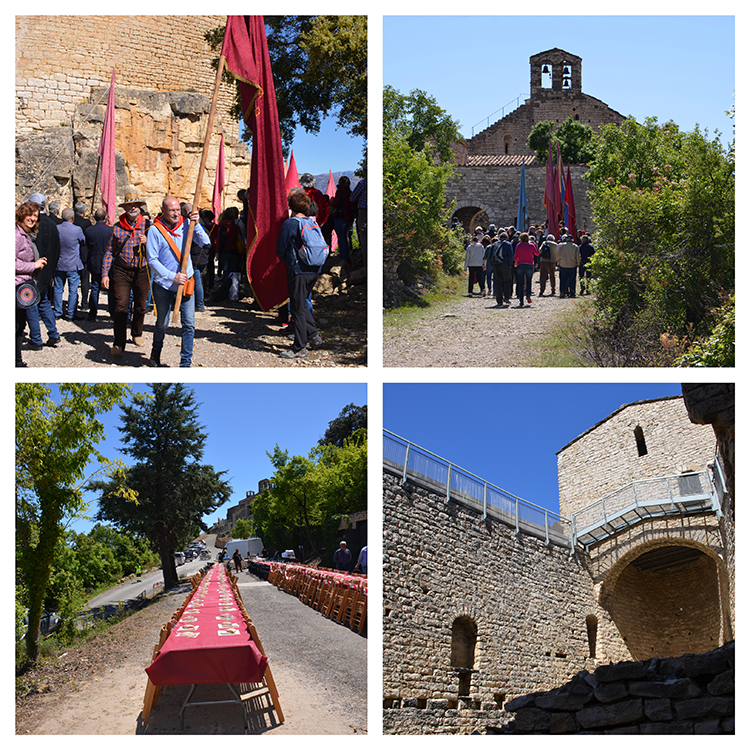
(Clockwise from top left) Annual procession in May; procession leads to the church; touring Mur Castle; tables set and ready for the feast. Photos: C. Worthington
If you happen to be visiting on the first Sunday of May, you might enjoy the local religious procession and party at the castle. A local and special event where regional foods are served, you will feel a part of a welcoming community if you can be there on that day.
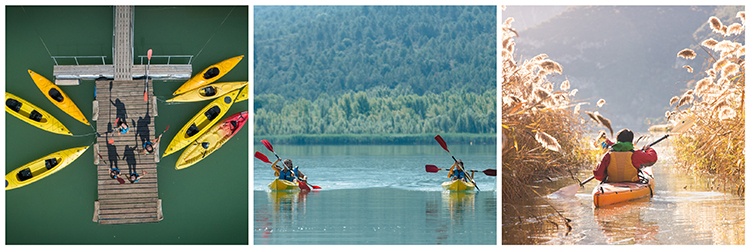
Kayaking to winery across Terradets Lake. Photo: Consell Comarcal del Pallars Jussà
Kayak to a Winery
Grab on to your adventurous spirit and kayak to a local winery. Make your way to Terradets Lake and hook up with Zenith Adventures. There you can rent kayaks and paddle around the lake and to the Mas Garcia Muret winery. Part of the fun is paddling through the reeds on a trail leading to the bank of the winery.
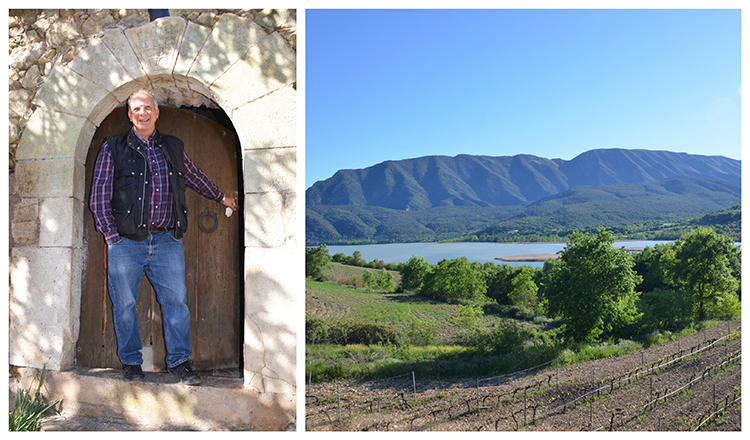
Winery owner, Dr. Jose Luis Garcia Ubis (left); View of vineyards and lake from winery. Photo: C. Worthington
Wine Tasting Panta de Terradets
The Celler Mas Garcia Muret winery is located on the 1756 family estate of Dr. Jose Luis Garcia Ubis on the banks of the Terradets Lake. A small winery that began only nine years ago, it produces 100,000 bottles, primarily from French oak, yearly. Dr. Ubis made a lifestyle change from a florist to a winemaker. His wines are primarily sold locally.
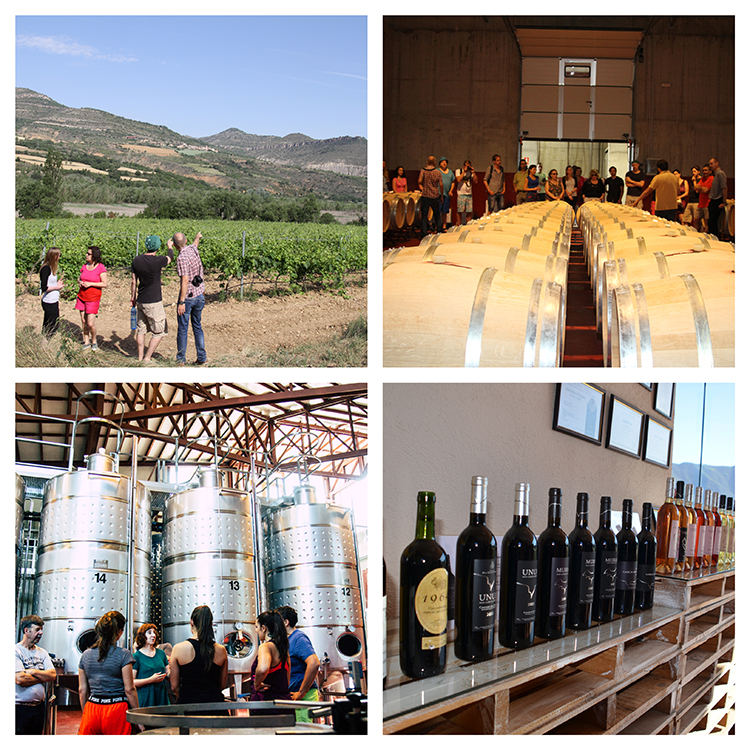
Panta de Terradets winery tour. (Clockwise from top left) Touring the vineyard, the oak barrels. Photos: Consell Comarcal del Pallars Jussà Wines produced by the winery (Photo: C.Worthington); wine production. Photo: Consell Comarcal del Pallars Jussà
Stop in (or paddle in!) for a tasting of wines, including the varieties of red (Tempranillo, cabernet sauvignon, merlot, syrah, and pinot noir) and white (chardonnay, white sauvignon, moscatel, white garnacha, and albariño).
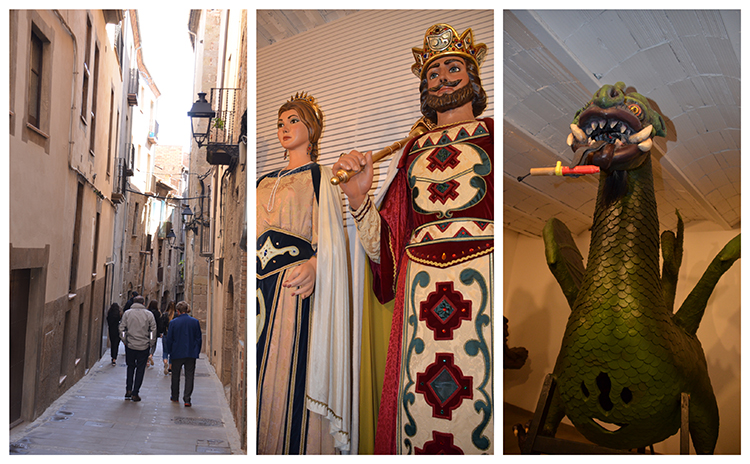
Walking through Solsana Village on ancient street; “Big Heads” costumes. Photo: C. Worthington
Solsona Village and Museum
Next stop: Solsona Village, a walled city with a population of 9,000, located in Lleida province, and dotted with many beautiful squares, small chapels, and fountains.
A unique stop is the Museum of Giants or “Big Heads” . These large figures are 8 to 10 feet tall. Some are over 300 years old. They are used for parades where people don Gothic period costumes and the “big heads.” You need to make an appointment to see the collection of giant figures, including kings, queens, animals, and other zany shapes.
One of the big events here is Carnival, an annual event held in February that attracts thousands of people.
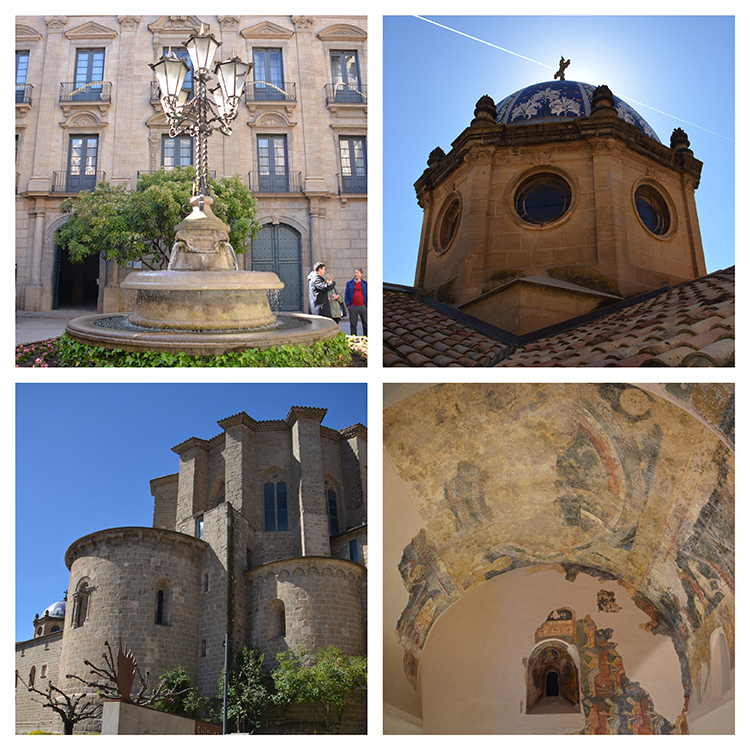
Episcopal Palace Museum, Solsana. Sant Quirze de Pedret church mural in the museum. Photos: C.Worthington
Sant Esteve d’Olius Church
About an hours drive from Solsana, discover Sant Esteve d’Olius Church, another standout Romanesque Church built in 1079.
Sant Quirze de Pedret Church (Church of Sant Quirze de Pedret)
Built in 983, Sant Quirze de Pedret Church was added on to in later centuries. The murals that were created there are now preserved in the Diocesan and Regional Museum of Solsona located in the Episcopal Palace and the National Art Museum of Catalonia and are considered exceptional examples of pre-Romanesque paintings in Western Europe.
Santa Maria de Ripoll Monastery
The monastery of Santa Maria has been expanded on since its beginning in 888. Guided tours there are interesting and recommended.
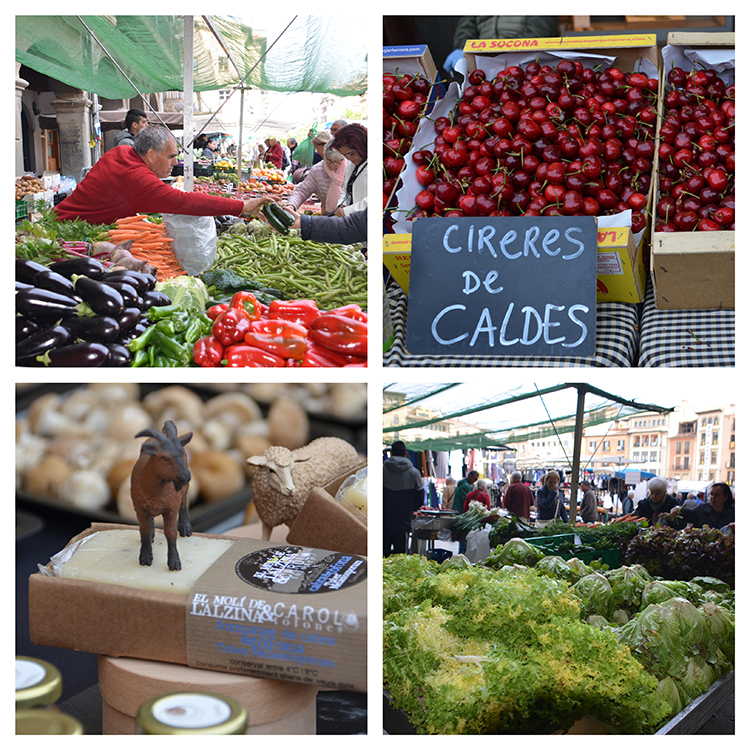
Scenes from Vic market day. Photo: C. Worthington
Vic
Circling back to Barcelona, stop in Vic, just 43 miles away. Well-known for its dry sausage (Osona) and their special pizza made from the wheat grown here, market days are fun to visit on Tuesdays.
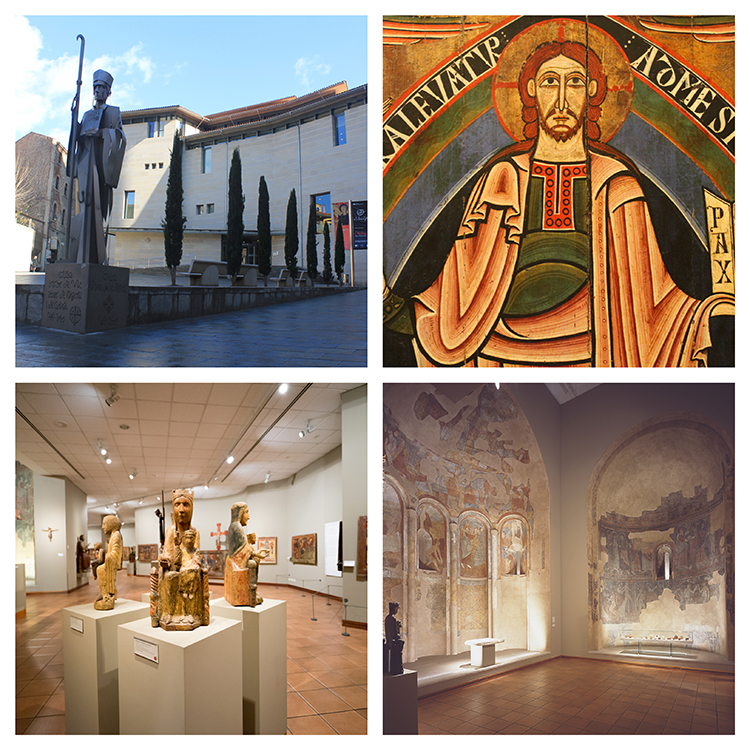
Exterior and collections of the Museu Episcopal de Vic. Photos: Museu Episcopal de Vic
Museu Episcopal de Vic
The Episcopal Museum of Vic boasts a collection of over 29,000 items, including pottery, jewelry, and archeological pieces.
The museum has a large and special collection of Romanesque art, including original mural paintings.
Convinced to Be an Explorer?
If you want to make art history a theme for a trip, certainly Romanesque Art of the Pyrenees is a perfect starting point. Decide to be “an explorer of history, an adventurer who will go back in time,” and you will be rewarded with an adventure of a lifetime.

Restaurants and hotels offer local cuisine, 5-star menus and accommodations.
RECOMMENDED PLACES TO STAY AND RESTAURANTS
As you travel through Catalonia, consider these hotels and restaurants on your “must go” list:
Oleum Restaurant, Barcelona (Located in the Catalonia National Museum of Art)
Hotel Castell de Ciutat La Seu d’Urgell
Hotel Manantial Balneari Caldes de Boí Caldes de Boí
Casa Rosa Restaurant Val d’Aran
For More Information
There are many sources for information to help you plan your trip. Start with the Catalan Tourist Board and then look to many of the individual area tourism boards for more ideas and information. To download a PDF of the article click here: Romanesque Art
Catalan Tourist Board www.catalunya.com
Consell Comarcal de l’Alt Urgell www.alturgell.cat/
Lleida Tourist Board www.turismedelleida.cat
Consell Comarcal del Pallars Sobirà www.pallarssobira.cat
Llavorsí City Hall http://llavorsi.ddl.net/index.php
Val d’Aran Tourist Board www.visitvaldaran.com
Vall de Boí Tourist Office www.vallboi.cat
Consell Comarcal del Pallars Jussà www.pallarsjussa.cat
Solsona Tourism www.solsonaturisme.com
Consell Comarcal del Solsonès www.solsones.ddl.net
El Berguedà Tourist Office www.elbergueda.cat
El Ripollès Tourist Office www.elripolles.com
Costa Brava Tourist Board en.costabrava.org


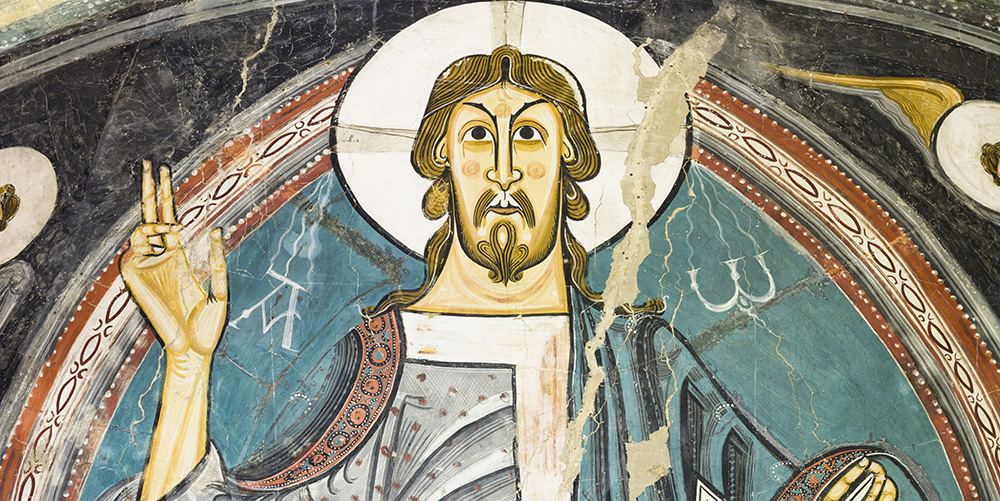


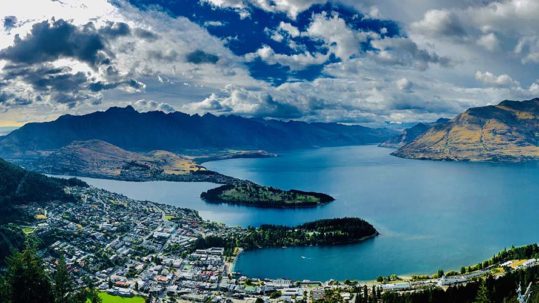

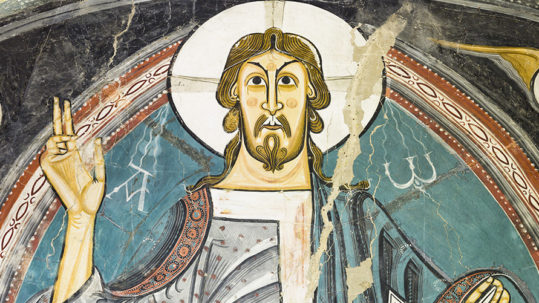




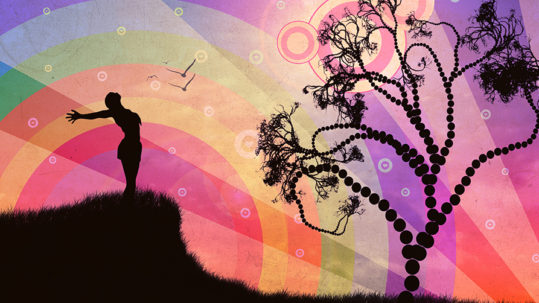

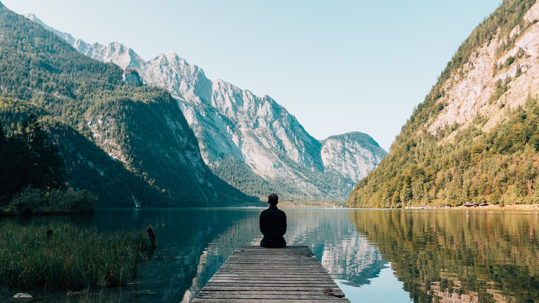






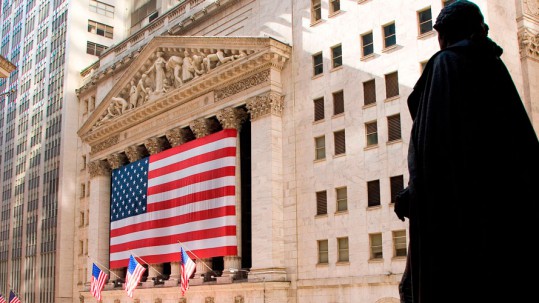

Sorry, the comment form is closed at this time.